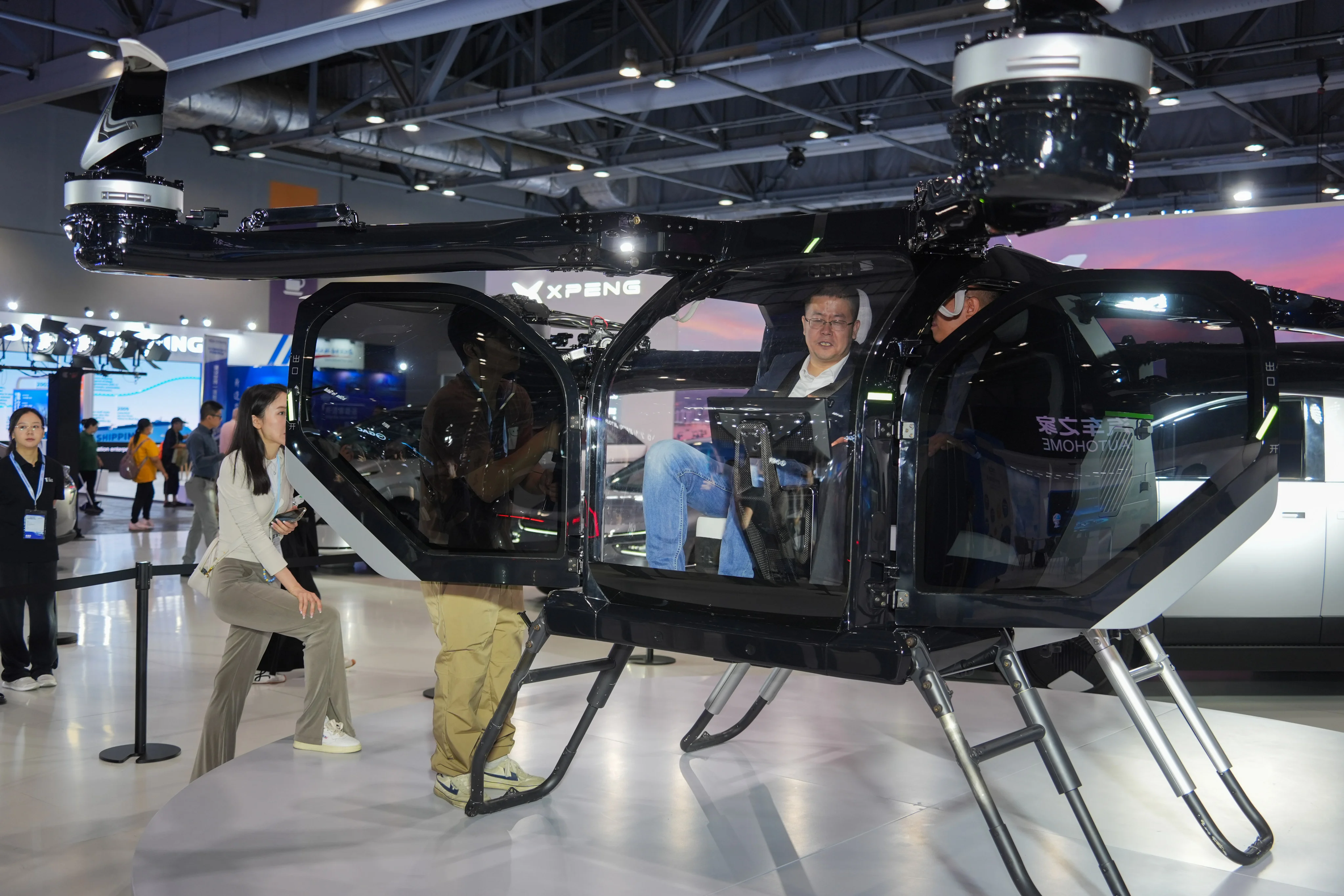China aims to dominate the skies in the race to make flying cars the transport of the future
By Daniel Ren
Copyright scmp

AeroHT, an affiliate of Chinese electric vehicle (EV) maker Xpeng, is preparing to enter European airspace as it edges closer to mass production of its flying cars following more than 5,000 orders.
The start-up – controlled by Xpeng co-founder and CEO He Xiaopeng – will also conduct its first overseas test flight of its eVTOL (electric vertical take-off and landing) vehicle in Dubai next month.
“We are not sure about the recognition or acceptance of products by the customers yet, but I’m happy to share with you that we have already received more than 5,000 orders for this flying car,” the CEO told a press conference at the IAA Mobility car show in Munich on Monday, according to a video clip seen by the Post.
“I hope our flying cars can make their debuts in Germany and other European markets soon.”
AeroHT expects to start production next month and begin deliveries of its eVTOLs in the second half of 2026, he said, adding that the company was putting the final touches on its factory in Guangzhou, capital of southern China’s Guangdong province.
The start-up began taking orders at the end of 2024, although it has yet to set a definitive price for the flying cars. The company said the personal air vehicles would cost less than 2 million yuan (US$280,840).
It is hoped that flying cars such as AeroHT’s could eventually offer an alternative to existing transport options, allowing -passengers to avoid traffic congestion.
At present, most low-altitude air travel business is marketed at corporate clients who have shown a growing interest in the next-generation segment.
He said he believed that eVTOL vehicles would eventually make up 20 per cent of the public transport market.
Dozens of global companies are currently exploring opportunities in the low-altitude space, which is defined as commercial airspace below 1,000 metres.
In 2009, Honda’s Fuzo flying car debuted, which resembled a drone with wheels.
In 2021, Lilium, a German company, completed US$830 million in fundraising in a special-purpose acquisition company deal on the Nasdaq.
US electric air taxi start-up Joby Aviation announced in May this year that it had received US$250 million in the latest round of financing.
Last year, Beijing designated Guangzhou as a base for the eVTOL industry.
In April, AeroHT signed an agreement with Panyu district in Guangzhou to build take-off and landing sites for flying cars.
Some of China’s biggest carmakers such as Geely Auto are developing flying cars as they pursue a new growth engine owing to slowing vehicle sales in the world’s largest automotive and EV market.
In mainland China, they compete against established players like Ehang and DJI by leveraging their own automotive supply chains, electrification, digitalisation and autonomous driving technologies.
State-owned carmaker GAC unveiled its flying cars in December 2024.
GOVY AirCab and the GOVY AirJet, two flying vehicles developed by GAC Group’s eVTOL division, Govy.
The AirCab is a mass-produced, two-seater multi-rotor vehicle for low-altitude tourism, with pre-orders open and deliveries planned for late 2026.
The AirJet is a composite-wing flying car designed for longer range and higher speeds, combining fixed-wing efficiency with multi-rotor VTOL capabilities.
Geely, China’s second-largest carmaker, established Aerofugia, a subsidiary producing unmanned aerial vehicles and passenger eVTOLs, in 2020.
Even Hongqi or Red Flag, China’s venerable luxury car brand which has produced vehicles for state leaders since 1958, has in recent years turned its attention to eVTOLs as part of what it calls its “all in” strategy to adapt to the future of mobility.



